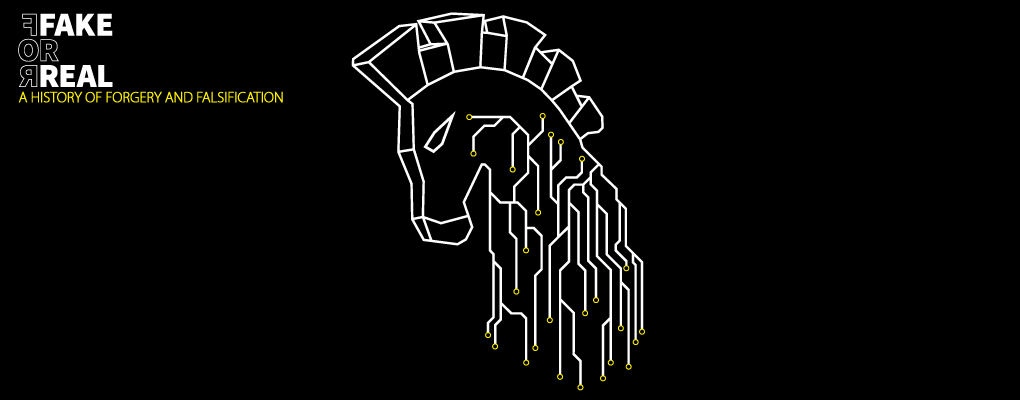
Virtual Tour I - Fake for Real
The exhibition presents falsifications throughout history, describing the specific historical circumstances that explain how they were created, the interests and motivations behind them, their impact and how they were ultimately exposed. Our aim is to show that fakes have a long tradition in history and do not only belong to our current era. We also reflect on how to build up resilience against the attempts to deceive and mislead ud.
The Fake For Real Exhibition - A Birdseye View
In this episode, we will ask ourselves a question how people from the past tried to navigate the world of unfalsifiable constructs of religious beliefs? How would they establish what was true for them? For centuries, the political and the religious spheres have bolstered each other’s claim to power and legitimacy. Each era fakes what it values most - thus prominent fakes and forgeries in the Medieval Europe carried a strong religious component.
Faithful Fakes - House of European History virtual tour series
We humans have a natural predisposition to explore and to try to make sense of the world around us, to understand it better - using techniques, which are available to us. Now, we will concentrate on the fakes and forgeries linked with gradually expanding horizons of the Europeans: from the geographical exploration to modern science.
Forging Science - House of European History virtual tour series
We are now in the section dedicated to the exciting era of nation building. The 18th and 19th centuries in Europe were centuries of turmoil and transformation. Empires were collapsing and on their ruins new nations arose. In this section of the exhibition, you will discover patriotic fakes, conspiracy theories and the fake evidence used in the Dreyfus trial.
Patriotic Fakes and Conspiracy Theories - House of European History virtual tour series
Virtual Tour II - Fake for Real
You may have heard this phrase: truth is the first casualty of war. And although we cannot establish its exact origin – we must acknowledge the wisdom it contains. In this section of the exhibition we explore the types of fakes and forgeries used during wartime, and the 'good' side of forging: the ethical counterfeit, the legitimate fake.
Fake For Good - House of European History virtual tour series
This episode revolves around the question: is it possible to erase someone’s existence from history by order of those in power? Why would state propaganda be involved in such practices?
Manipulating Memory - House of European History virtual tour series
In this last episode we reflect on more contemporary issues - the freedom to write and publish whatever one wants: is it an absolute right, or one that should have some limitations? Are some texts purely destructive or is freedom of expression always worth protecting? You have probably heard about the hate speech and fake news in the context of the Internet and social media, but this discussion is all but new...
The Evolution of Fake News - House of European History virtual tour series
Human Rights in Fake for Real - curators' tour
On the occasion of Human Rights Day 2020 we delve into our Fake For Real exhibition to explore how the freedom of expression, fake news & misinformation have interacted throughout European History.
With curator Joanna Urbanek
In our second video for Human Rights Day, join us in our Fake For Real exhibition to see how the Dreyfus affair and acts of antisemitism subverted the right to a fair trial, creating an international scandal.
With curator Simina Badica
Ruling and praying
What makes power legitimate? Since time immemorial, the political and the religious spheres have bolstered each other’s claim to power and legitimacy. Roman emperors became Gods; Popes held temporal power; the presence of saintly remains raised the prestige of holy sites. An emperor’s blemish-free record, the Pope’s airtight paperwork, the physical presence of a powerful saint – it can sound too good to be true. Fortunately, we do not have to reiterate the distorted testimonies of the past. The facts have been uncovered by the brave and the curious.
Marble head of the Emperor Geta vandalised with a chisel following the act of damnatio memoraie - The Roman Empire, c. 200 A.D.
Keen to combine religion and political power, the crowning glory for a Roman emperor was deification - becoming divine and immortal. The ultimate punishment by contrast was being forcefully erased from history. In the modern era, the term damnatio memoriae was coined to describe this practice. Those condemned were deleted from records, their wills were annulled and their likenesses were destroyed. In Geta’s case – murdered on the orders of his brother and co-emperor Caracalla – merely mentioning his name became a capital offence.
© Fondazione Musei Civici di Venezia, Italy
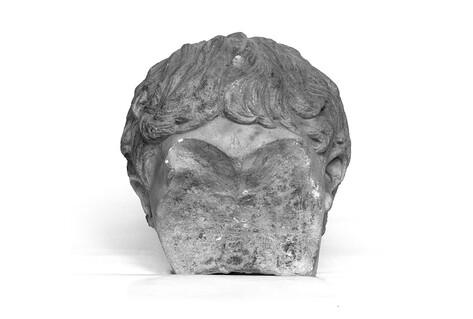
Breviary with an illustration showing Saint Martial attending the multiplication of the loaves - Burgundy, after 1481
The chronicler Adémar of Chabannes claimed that Saint Martial, a 3rd century bishop buried in Limoges, had actually been one of the apostles. Adémar convinced many, raising the prestige of the Abbey Saint Martial, but a wandering monk, Benedict of Chiusa, challenged this story, as it had no confirmation in earlier Christian tradition
© Les silos, maison du livre et de l'affiche, Ville de Chaumont, France

Understanding the World
The invention of the printing press ushered in a new era with information becoming available on an unprecedented scale. But an ever-increasing quantity of information does not guarantee accuracy. Those in pursuit of fame and fortune were happy to spread false information to an audience eager for the latest discovery. Even the history of scientific research exhibits wilful forgeries. The possibility of being proven false is not a defect of the scientific method but an essential quality that differentiates it from other systems of making sense of the world.
Figure of a ningyo, the “human fish” - Japan, 1800–1823
Cartographers and writers often illustrated their works with images of sea monsters and fantastic creatures allegedly appearing to or even attacking sailors. Even Columbus claimed to have seen three mermaids, ‘not as pretty as they are depicted’. In the 19th century, Japanese ‘mermaids’ were still presented in curiosity chambers and museums in Europe and America. In Japanese culture, ningyo were believed to possess mystical abilities. Papier mâché and cotton around a wooden frame, completed with (bovine) intestine, human hair, parts of shark jaws and fish skin.
© Nationaal Museum van Wereldculturen, The Netherlands
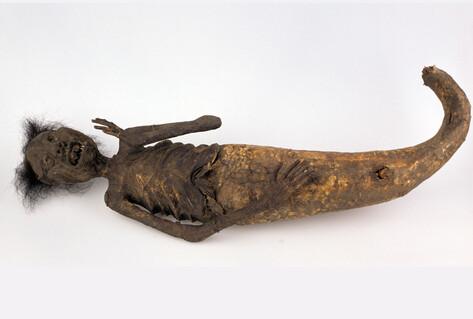
Hammer of Witches - a manual of witch-hunting - Frankfurt, 1588
The invention of the printing press around 1440 led to a deluge of information and misinformation. Lack of control over content created unease akin to today’s concerns about fake news, distorted realities and hate speech. The print revolution had many victims. The popularity of texts dealing with witchcraft fuelled a wave of persecution, and led to the deaths of thousands of supposed witches over more than two centuries. Meanwhile, increasingly literate Europeans gained access to books, pamphlets and newspapers empowering them to strive to acquire civil liberties and change the course of history.
© House of European History, Belgium

Anonymous note accusing pharmacist David Welman of witchcraft and being a werewolf - Lemgo, 1642
Following a local dispute, numerous notes such as this one appeared in the town of Lemgo, German. After two trials, Welman was executed.
© Stadtarchiv Lemgo, Germany

Piltdown Man
Science based on empirical research strives to deliver facts. Yet scientists inevitably leave traces of bias in their work. Others deliberately pervert research for personal gain. Charles Dawson was one such man. Finding fertile ground among palaeontologists eager to confirm their own theories, the 1912 “Piltdown Man” hoax took forty years to uncover. Its exposure illustrates the strength of the scientific method. Unlike religion or ideology, scientific knowledge can be disproved, and proved.
Institut Royal des Sciences Naturelles de Belgique. © Bernard Fontanel, DEC.
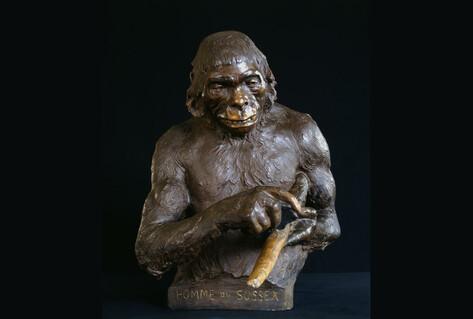
Uniting and dividing
Fakes and forgeries were powerful instruments in the processes of creating ethnic and national identities in the 18th and 19th centuries. All over Europe, ‘patriotic’ fakes mixed with genuine historical discoveries reinforced national movements. The creation of modern nations required common histories but also common enemies. Forged documents, conspiracy theories and miscarriages of justice were used to create and condemn society’s scapegoats, with devastating and long-lasting consequences.
Copper engraving of Ossian’s Swan Song, by Johan Frederik Clemens - Copenhagen, 1787
History, literature and art became important political tools in national identity-building in 18th and 19th century Europe. The urge to ‘fill the gaps’ gave rise to numerous forgeries. Each ‘discovery’ traced a nation’s history as far back as possible and proclaimed its cultural superiority. Many were narrated by a national ‘Homer’ and claimed that a particular nation was the cradle of Indo-European civilisation. Even after being exposed as fakes, these stories continued to have considerable influence.
© House of European History, Belgium
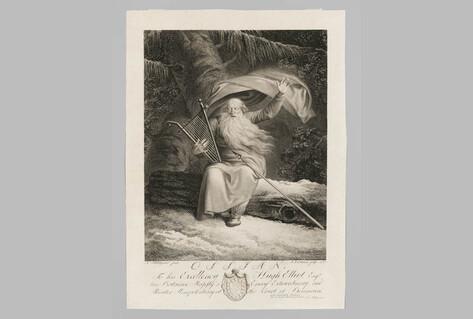
Czech translation of the Protocols of the Elders of Zion - 1925
A conspiracy theory maintains that some covert, highly influential group of people is the cause of dramatic and seemingly inexplicable events. The Protocols of the Elders of Zion, published in Tsarist Russia in 1903, claimed to uncover Jewish plans for world domination. This forgery in the form of a conspiracy theory became the most influential antisemitic text of the past hundred years. Although it was soon debunked, the ideas spread, with devastating consequences.
© House of European History, Belgium
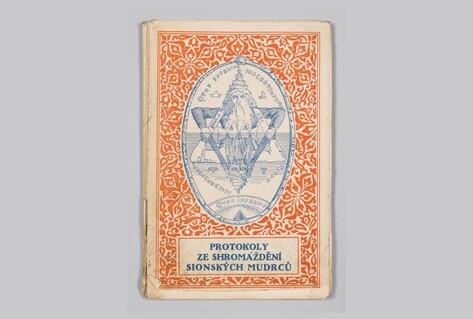
Poster explaining the Dreyfus Affair at the ‘History of a traitor’ - France, 1899
In 1894, a document was found offering to sell French military secrets to Germany. The crime could not go unpunished. A case was hastily built against Alfred Dreyfus, the only Jewish officer on the French Army’s General Staff. On the basis of forged documents, a ‘Secret Dossier’ and far-fetched ‘expert opinions’, Dreyfus was convicted of treason and condemned to military degradation and permanent deportation. The ‘Dreyfus Affair’ divided France, fanned the flames of antisemitism and exposed the exploitable biases of the judicial system.
© House of European History, Belgium

Fighting war
“Truth” has been described, in a phrase whose origin is still uncertain, as ‘the first casualty of war’. War is certainly a time when those engaged in it resort to falsehood and deception. During World War II, all of Europe became a battlefield, and choices of whom to trust had fundamental consequences. Establishing the facts of the crimes covered up and whitewashed by the totalitarian regimes became a task for the subsequent decades.
Tools used by the resistance in the Personal Identification Card Centre in Amsterdam to forge personal documents - Occupied Netherlands, 1941-44
A pen, a rubber stamp, a typewriter, acetone. In the hands of brave individuals, these objects saved thousands during World War II. Throughout Europe, rigorous administration enabled occupying Nazi regimes to identify, deport and exterminate millions of Jews, and anyone else deemed undesirable. A new identity could mean avoiding the concentration camps. Forged documents enabled daring acts of sabotage and espionage. With the right papers it was possible to cross borders and fake ration cards, saving a person from starvation.
© Verzetsmuseum, Amsterdam, The Netherlands
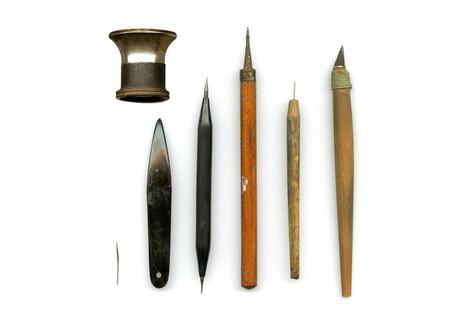
Paradummy used during the liberation of the Netherlands - 1945
Fake parachutists (‘paradummies’) were first used efficiently by German forces occupying Belgium and the Netherlands in 1940 to draw attention away from sites where real soldiers were being dropped. The paradummies were designed to self-destruct, and few remain.
Fries Verzetsmuseum, The Netherlands © Collection Stichting Verzetsmuseum Fryslân
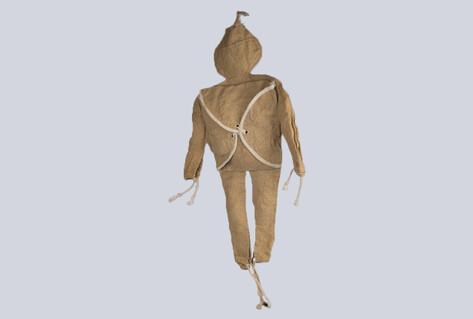
Fake and fortune
Throughout history, profit has been one of the main reasons for producing forgeries. Works of art, luxury products, everyday consumer goods and currency are forged for financial gain. Faking what people most desire, be it a painting by a Dutch Old Master or a Louis Vuitton bag, has become a key element of the globalised consumerist society that we live in. But the fake has also been used to expose our insatiable desire for ‘more, cheaper and newer’, as in the ‘Czech dream’ experiment and documentary.
Han van Meegeren, Christ and the Woman taken in Adultery - The Netherlands, c. 1942
Hermann Göring paid 1 650 000 guilders for this work, convinced that he was buying a painting by Johannes Vermeer. Han van Meegeren made millions selling his own paintings as works by Dutch Old Masters. He fooled art experts and Nazi collectors alike. When threatened with charges of collaboration after the war, he confessed to the lesser crime of forgery. From traitor he suddenly became a national hero, a man who swindled Göring. Yet perhaps creating this palatable public image was his last great trick! Oil on canvas.
© Museum de Fundatie, The Netherlands

Traditional slipper faking Burberry check
Forgers have capitalised indiscriminately on the consumerist hypocrisy of wanting more, cheaper and newer while craving status, uniqueness and authenticity. And yet the more fakery is exposed, the more it seems to thrive! The ‘ironic purchasing’ trend even prefers fake over ‘authentic’ as a form of rebellion against capitalism. Turn the tables further still to find conscientious fakery: faux fur, synthetic diamonds and vegan leather.
© Musée de la Contrefaçon, Paris, France

The ‘un-fakeable’ banknote by Roger Pfund - Geneva, 2012
‘The world’s second oldest profession’, forging currency is as old as money itself. In antiquity, counterfeiting typically involved diluting the quantity of precious metal in a coin with base metals and then covering it with a thin layer of gold or silver. Yet as minting and printing technologies improved, so too did the forger’s skillset. Since the appearance of banknotes, increasingly high demands have been placed on the artistic and technical skills of both currency designers and forgers, as each tries to outsmart the other.
The long history of counterfeit currency goes hand in hand with that of ingenious design and cutting-edge science. This banknote is currently the best attempt at ‘un-fakeable’ money. It combines the most advanced security elements currently available - Security ink, diffractive strip, SPARK screen printing, transparent polymer substrate - with Roger Pfund’s elaborate graphics.
© Numiservices Collection, Switzerland
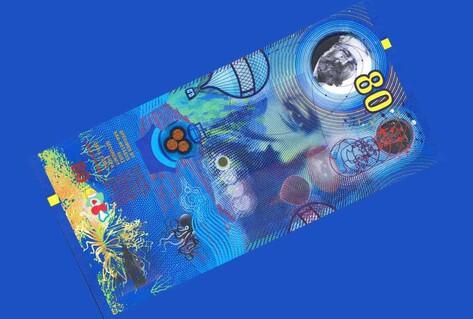
The era of post-truth?
The term ‘post-truth society’ describes a culture in which public opinion is shaped by emotion and personal belief rather than by facts. ‘Fake news’ is often considered its most apparent symptom.
However, fake news is not restricted to any specific era. What is special about the current situation is that modern means of communication, notably the internet, allow for its rapid spread and dissemination on a global scale. Confronted with an abundance of information emanating from innumerable sources, it is often difficult to determine what is true and whether a source is reliable.
Fortunately, there are ways of tackling these challenges: a critical mind that questions first impressions, an awareness of one’s own prejudices, and determining how serious the source is, may help us separate fact from fiction and navigate our way through the complexities of reality.
Covid-19: An Infodemic
As the World Health Organization stated: "The 2019-nCoV outbreak and response has been accompanied by a massive 'infodemic' - an over-abundance of information – some accurate and some not – that makes it hard for people to find trustworthy sources and reliable guidance when they need it. But what is an 'infodemic' and how does it relate to the Covid-19 pandemic?
In this interview Alexandre Alaphilippe from EU DisinfoLab discusses information asymmetry, disinformation and conspiracy theories in relation to the coronavirus outbreak. He outlines the subsequent impact on societies and the media, and the steps people can take to reduce the spread of the infodemic.
"In our bubbles"
Social media platforms are great for connecting people, but they also help to create so-called ‘filter bubbles’. They select information and expose us to things we have already approved and liked in the past. These filters lead to an illusion of seeing the whole picture, whereas in reality we remain confined to a limited media environment shared with mostly like-minded people. Since such bubbles do not leave much room for diverging views and alternative sources, they provide fertile ground for falsehoods to spread and thrive.
© House of European History, Brussels, Belgium
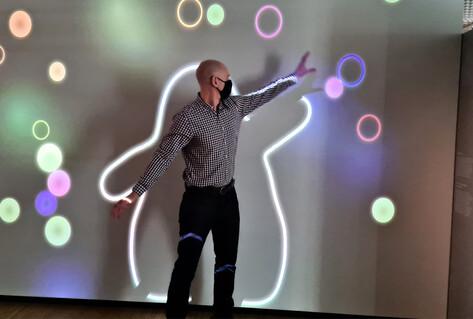
Fake invaders
Find out if you can spot disinformation. In this interactive part of our exhibition, use the control panel to shoot down social media and news posts containing misleading information before they reach the bottom of the screen. Let trustworthy news items through or shoot these with green bullets. Scrutinising photos, titles and captions carefully will help you discern fact from fiction.
© House of European History, Brussels, Belgium
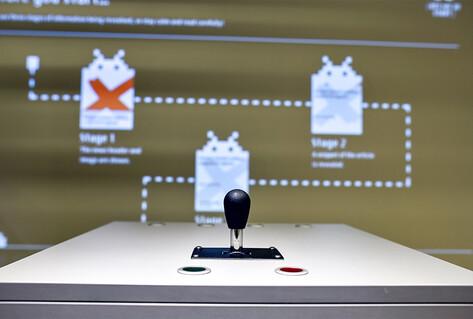
Illustration from ‘Puck’ by Frederick Burr Opper
Reporters dash about with various stories, some of which are described as ‘fake news’. The term first began to appear in the American press at the end of the 19th century.
© Library of Congress, 1894, New York, United States
